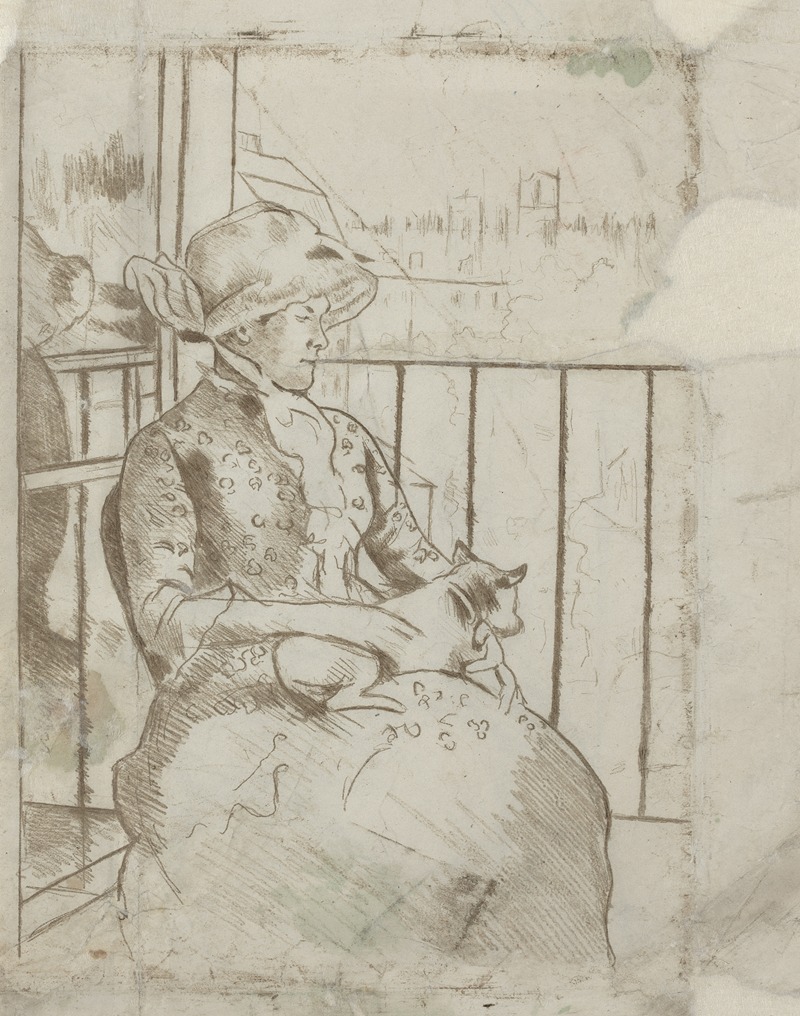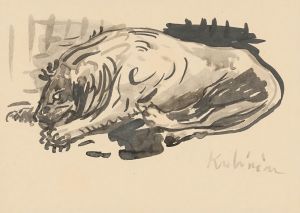
Susan on a Balcony Holding a Dog
A hand-painted replica of Mary Cassatt’s masterpiece Susan on a Balcony Holding a Dog, meticulously crafted by professional artists to capture the true essence of the original. Each piece is created with museum-quality canvas and rare mineral pigments, carefully painted by experienced artists with delicate brushstrokes and rich, layered colors to perfectly recreate the texture of the original artwork. Unlike machine-printed reproductions, this hand-painted version brings the painting to life, infused with the artist’s emotions and skill in every stroke. Whether for personal collection or home decoration, it instantly elevates the artistic atmosphere of any space.
Mary Cassatt, an influential American painter and printmaker, is renowned for her portrayals of women and children in domestic settings. One of her lesser-known works, "Susan on a Balcony Holding a Dog," exemplifies her keen observation of intimate moments and her ability to capture the subtleties of human relationships. Although specific details about this particular painting are scarce, it is consistent with Cassatt's broader body of work and her artistic themes.
Mary Cassatt was born on May 22, 1844, in Allegheny City, Pennsylvania, and spent much of her adult life in France, where she became associated with the Impressionist movement. Her work often focused on the private and social lives of women, emphasizing their roles as mothers and caregivers. Cassatt's style was influenced by her close association with other Impressionists, such as Edgar Degas, and her exposure to Japanese prints, which informed her use of color and composition.
"Susan on a Balcony Holding a Dog" likely reflects Cassatt's interest in capturing the everyday lives of women, a theme prevalent in her oeuvre. The painting's title suggests a scene of a woman named Susan, positioned on a balcony, holding a dog. This setting implies a moment of leisure or contemplation, a common motif in Cassatt's work, where women are often depicted in moments of quiet reflection or engaged in simple, everyday activities.
Cassatt's technique often involved loose brushwork and a focus on light and shadow, characteristic of the Impressionist style. Her ability to convey the textures of fabric, the softness of skin, and the play of light across surfaces would have contributed to the painting's intimate and realistic portrayal of the subject. The inclusion of a dog adds another layer of domesticity and companionship, elements frequently explored in her paintings.
While specific details about "Susan on a Balcony Holding a Dog" are limited, it is reasonable to infer that the painting aligns with Cassatt's broader artistic goals: to elevate the depiction of women's lives and to explore the nuances of their experiences. Her work often challenged the traditional roles assigned to women in art, presenting them as active, thoughtful individuals rather than passive subjects.
Mary Cassatt's contributions to art were significant, particularly in how she represented women in the late 19th and early 20th centuries. Her paintings offered a fresh perspective on the female experience, emphasizing themes of motherhood, family, and domestic life. Cassatt's work continues to be celebrated for its emotional depth, technical skill, and innovative approach to composition and subject matter.
In summary, while "Susan on a Balcony Holding a Dog" may not be as widely recognized as some of Cassatt's other works, it embodies the qualities that define her artistic legacy. Through her sensitive portrayal of women and children, Cassatt provided a window into the private worlds of her subjects, capturing the beauty and complexity of their lives with empathy and insight.


















